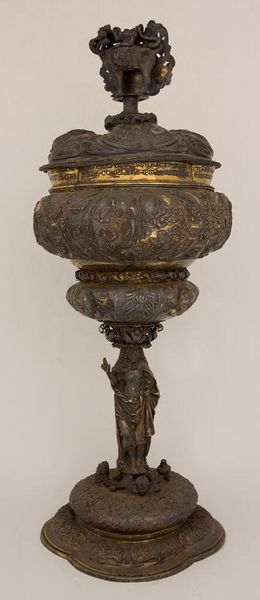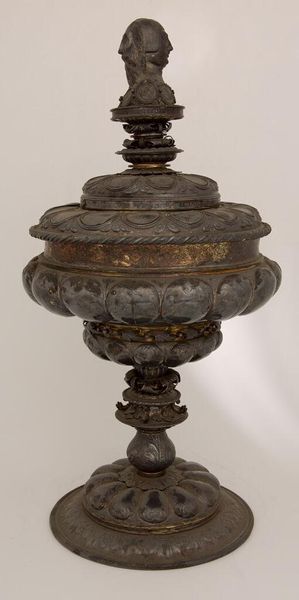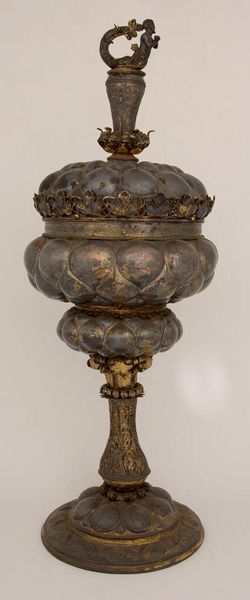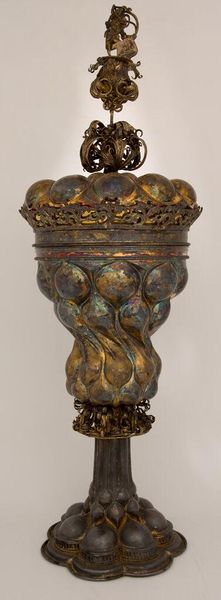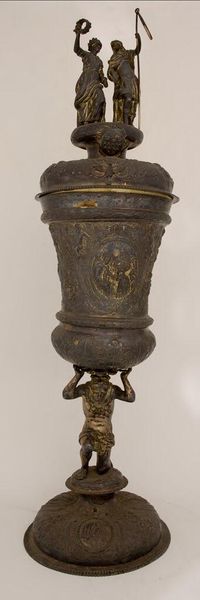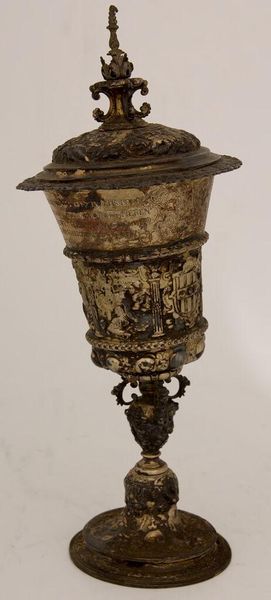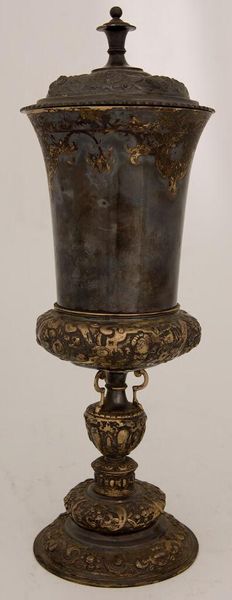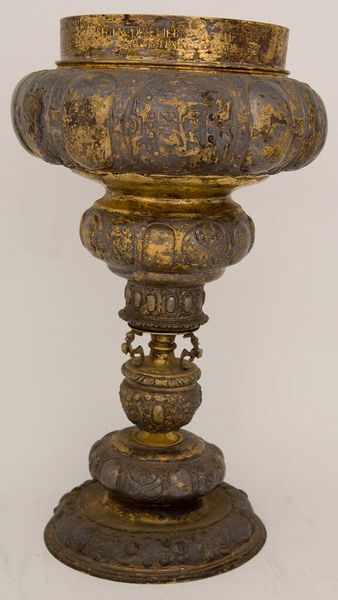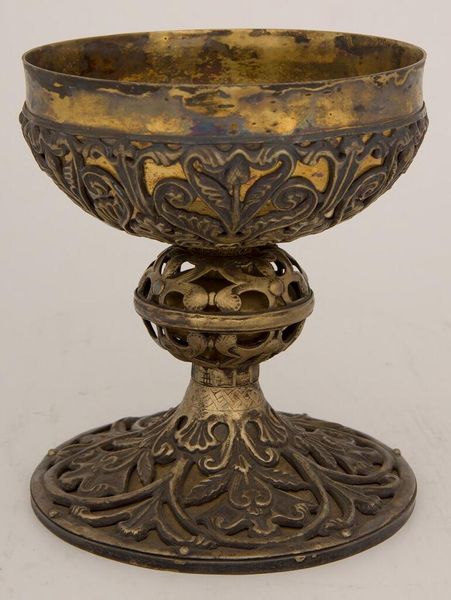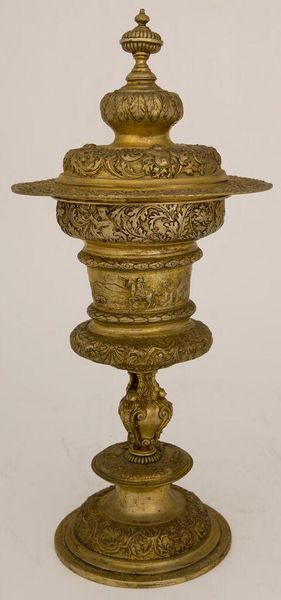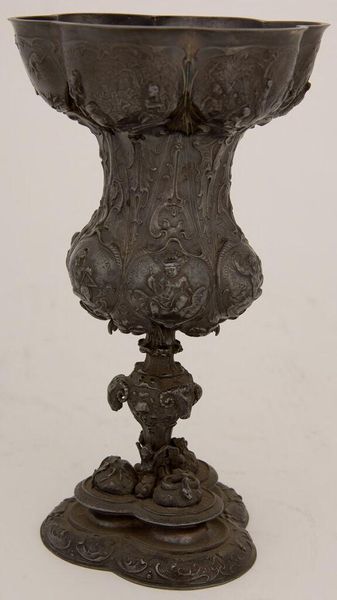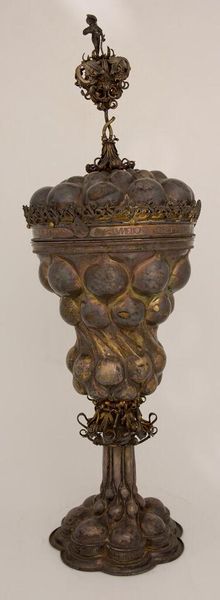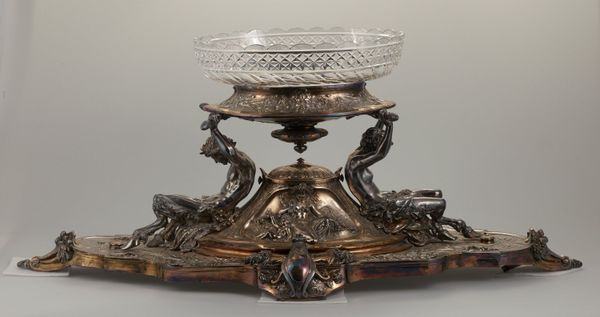
Facsimile of Goblet with the Jessie Tree (Nuremberg School (?), c. 1540-1550) c. 1900
Dimensions: sight: 54.6 cm (21 1/2 in.)
Copyright: CC0 1.0
Curator: Immediately, I'm struck by the intricate metalwork of this goblet—it projects power and history. Editor: Indeed, the "Facsimile of Goblet with the Jessie Tree," likely from the Nuremberg School around 1540-1550, showcases the maker's skill. The Jessie Tree imagery is really interesting, depicting the lineage of Christ. Curator: Right, and the tree motif itself is powerful. Trees have always represented life, growth, and connection to ancestors, which resonates with the theological concept of lineage. Editor: But I wonder, who was this goblet for? Was it a symbol of wealth, religious devotion, or both? Its presence would have signaled specific social and political affiliations. Curator: Without question. These objects were designed to communicate status and beliefs. It's an object meant to signal power, wealth, and religious allegiance. Editor: The layers of meaning encoded in the goblet reflect the complexities of the period. So much to think about. Curator: Absolutely, and for me it evokes the weight of tradition and the timelessness of faith.
Comments
No comments
Be the first to comment and join the conversation on the ultimate creative platform.
